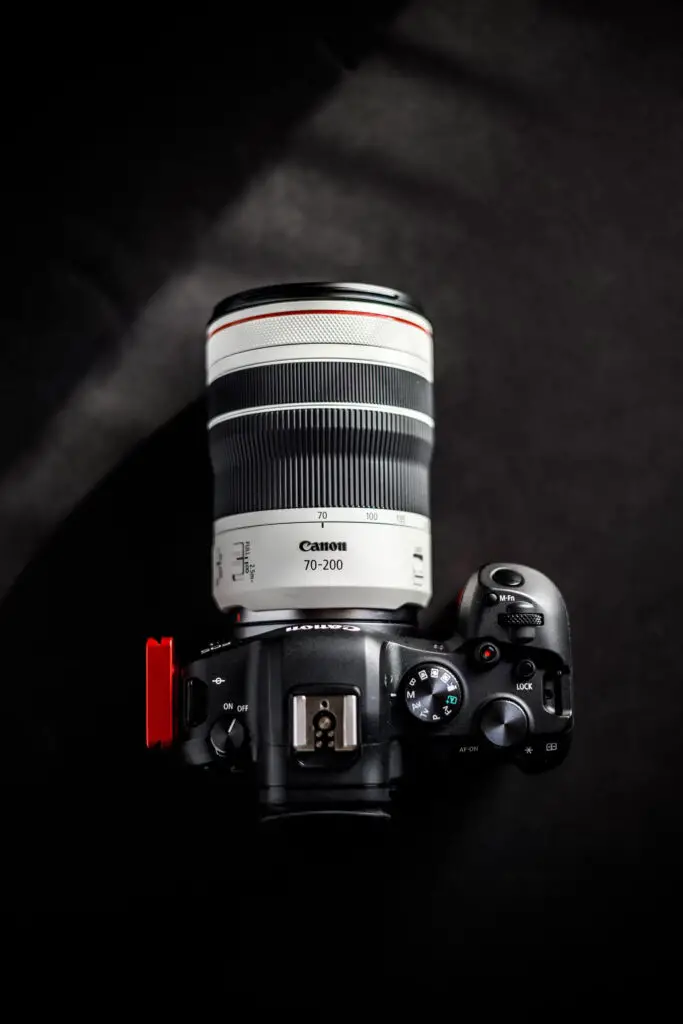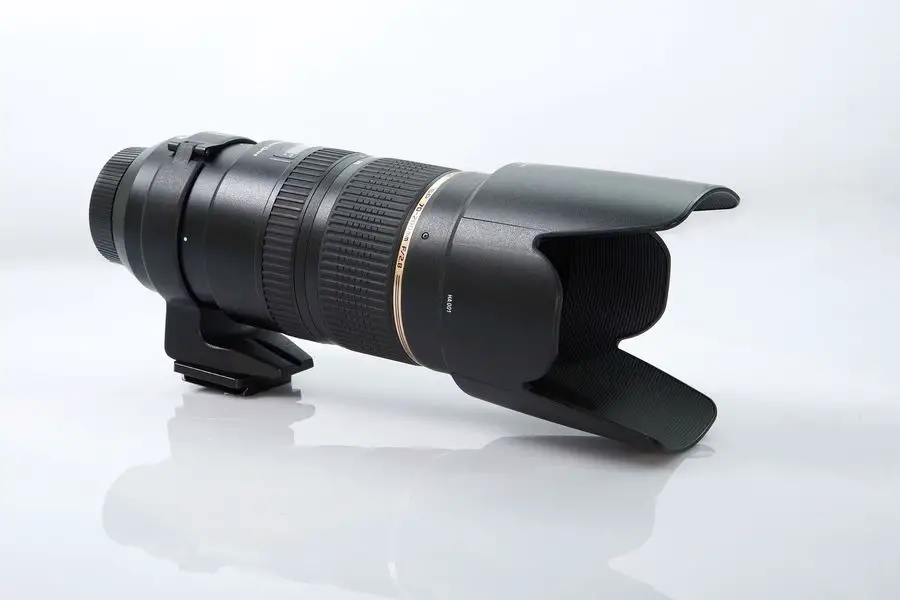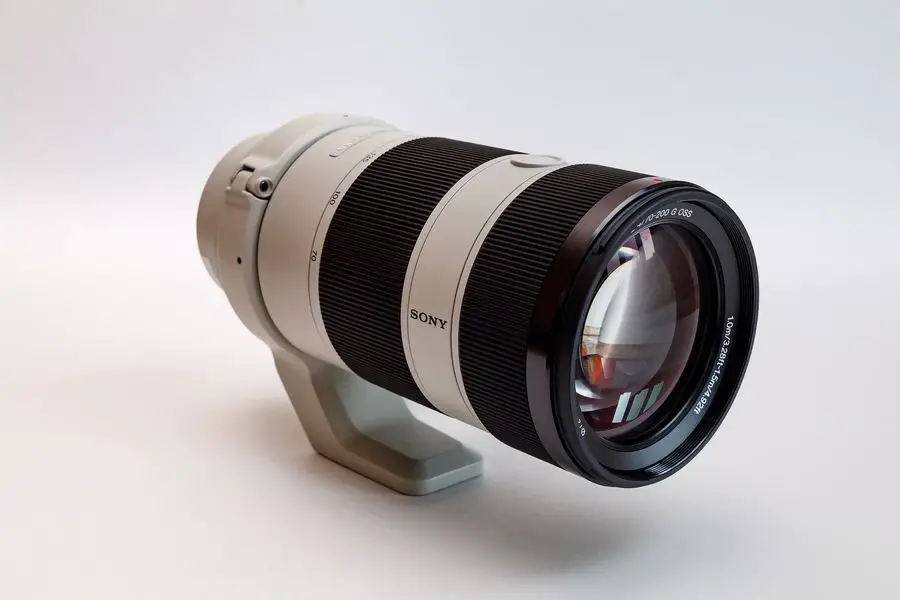As an Amazon Associate we earn from qualifying purchases.
What is a 70-200mm lens used for? A 70-200mm is one of the most popular professional lenses today. It is a telephoto lens that offers an effective focal length; it excels at one job: It lets you capture the action without intruding on it.
Contents
What Is a 70-200mm Lens Used For?
A 70-200mm lens is a telephoto zoom that offers fairly wide angles of view and is ideal for sports and wildlife photography. These lenses are also great for portrait shots, providing flattering compression at the long end of the zoom range without requiring you to step back too far from your subject.

There are many lenses available in the market. However, what makes the 70-200mm special? The 70-200mm gives many benefits to photographers. These are just some of its advantages over other lenses:
Wildlife Photography
If you are a wildlife photographer, then a 70-200mm lens will be one of your most essential tools. This is because it has a relatively long focal length, exceeding 100mm, 70-200mm lenses are great for wildlife photography, especially when you want to capture subjects in their natural habitat without disrupting them.
With a fast maximum aperture of f/2.8 across the entire focal range, photographers can use this lens in low light conditions, such as when shooting at dawn or dusk or when photographing subjects on a cloudy day.
You can also use this lens to capture details such as an animal’s eye or fur. An animal’s natural habitat is their home, so it’s best not to disturb them in any way while they’re being photographed. Telephoto lenses allow you to capture photos without physically getting too close.
Wedding Photography
Wedding photography is one of the most common uses for a 70-200mm lens. This type of photography calls for various angles and perspectives, and this lens is ideal for capturing those wedding candid moments between the bride, groom, and their guest.
A 70-200mm zoom lens gives you a lot of flexibility in framing your subject. The minimum focus distance on most 70-200mm lenses is 4.9 feet. You can use this to get some nice close-up shots of the bride or groom.
The 70-200mm range is also great for photographing tight family group shots, a traditional part of wedding photography.
Sports Photography
The 70-200 mm lens is a staple in the sports photography community. Being a telephoto zoom lens, it’s great for shooting sports. It allows you to get right into the action without having to be right on top of the action.
Where you need to get in close and can’t go on the field or court with the players, the lens allows you to use a reasonably fast shutter speed to freeze the action when shooting.

With a 70-200mm zoom range, you can fill the frame with your subject from just about anywhere in the stands (assuming you have a good seat). As long as you sit near enough to a center court or the 50-yard line, you’ll be able to capture every slam dunk or touchdown pass.
Portrait Photography
For portraiture, the 70-200mm lens is a great choice. It has a narrow depth of field, so you can blur out the background to isolate the subject from anything else in the frame that might be distracting.
The focal length makes it easy to get flattering portraits. You can shoot from a distance and don’t have to get too close to your subject. It’s also a good option for shooting large groups of people if you need more space than what a 50mm lens can provide.
The downside of using this type of lens for portraits is that it requires some distance between you and your subject, which is sometimes impossible in small spaces. It is also not a good option for outdoor shots to capture the background.
Why Does Every Photographer Require a 70-200mm Lens?
The global photography services market is estimated to grow at a 5% annual rate by 2023. As a result, it is essential to have a DSLR camera and the best lens for it. Several lenses are on the market; what is a 70-200mm lens used for? Why would you want one?
Zoom Range
Its zoom capabilities allow you to capture subjects from far distances without moving away from whatever position you are in. It is also helpful when the photographer cannot get closer to the issue due to restrictions on space or hazards.
In addition, the zoom range allows photographers to capture different types of images, such as intimate portraits and more distant shots. You can also use them for landscape, wildlife, and sports photography.
Focal Length
This lens has an excellent focal length range. At 70mm, it provides you with a slight telephoto effect, while at 200mm, you can get closer to your subject than ever before. The compression effect on this lens is fantastic, and it can easily create some beautiful images.
The 70-200mm focal length range offers more zoom than a standard zoom lens that goes up to around 50mm or 55mm. That extra zoom makes these lenses ideal for photographing subjects at a distance.

Large Maximum Aperture
The big maximum aperture of 70-200 mm lenses is another reason for their appeal. The maximum aperture of most lenses in this focal range is f/2.8, allowing you to photograph even on sunny days.
When photographing in low light, use this lens at its widest aperture to allow in as much light as possible without having to raise your ISO levels too high (since ISO controls how sensitive your camera is to light).
Most are also stabilized, which is helpful for handheld shooting in low-light environments such as churches where flash photography is prohibited. At 200mm, you also have a lens that can reach far enough for several sorts of wildlife photography, particularly birds (although a teleconverter will be necessary for distant subjects).
Benefits of a 70-200mm Lens
The 70-200mm lens is a workhorse for most photographers. It’s flexible, making it suitable for many different photography disciplines. When combined with a full-frame camera body, you get amazing benefits.
Image Stabilization (IS)
Most 70-200mm lenses will have some form of image stabilization. Some lenses may have optical stabilization, where the glass elements are shifted inside the lens to compensate for camera shake.
Other lenses may have sensor-based stabilization, where the sensor works with your camera’s gyroscope to compensate for movement. Both systems work very well at stabilizing your images while hand-holding your lens at low shutter speeds.
Speed
The 70-200mm maximum aperture offers many benefits, but the most significant advantage is speed. With click-stops at f/2.8, f/4, f/5.6, and smaller apertures (e.g., f/16), you have more flexibility when shooting in lower light conditions, especially when combined with high ISO settings like ISO 800 or ISO 1600.
The maximum aperture allows you to use faster shutter speeds in low light conditions or when you need to freeze action. This makes it easier to capture the shot without using flash.
Size and Weight
A 70-200mm f/2.8 can be made in a compact size while still providing a very nice zoom range. It is also significantly smaller and lighter than an equivalent zoom range prime lens, such as a 135mm or 200mm lens.
The main benefit of a 70-200mm maximum aperture is the size and weight. At 2.8, it’s a lovely lens that you can use in low light and get good results. But at 2.8, it’s not that big or heavy.

Build Quality
It is built to be more durable and withstand more abuse than a typical kit lens. It includes weather sealing that would allow you to shoot in light rain without worrying about water damage. The internals are built better to withstand being jostled around during use.
When you purchase one of these lenses, you typically get a much sharper image than what you would from a typical kit lens. This is due mainly to how the optics are constructed inside the lens and the materials used for construction.
Better Low Light Performance
One of the main reasons for using a large maximum aperture is better low light performance. With a larger maximum aperture, you have more shutter speed and ISO flexibility.
This is helpful when shooting indoors and in other low light conditions such as sunset or sunrise. If you plan on using this lens outdoors, you may want to consider a different focal length.
Drawbacks 70-200mm Lens
- The main drawback of a 70-200mm lens is that it won’t let in as much light as an equivalent wider lens. This means that the shutter speed must be faster if taking pictures in low light conditions.
- This lens is considered a large lens because of its size and weight. It is necessary to have a sturdy tripod when using the lens at its entire focal length of 200mm.
- You can’t zoom in or out without manually changing your camera body’s settings (which requires turning off autofocus).
- It is long and heavy; it requires a tripod collar to balance correctly on your tripod or monopod. You will want to purchase one that has an arca-swiss plate or quick release plate on the underside of it so that you can easily attach the lens to the collar for stability and rotation.
Related Questions
How Far Can You Shoot With a 70-200mm Lens?
Most 70–200mm f/2.8 lenses are designed for full-frame cameras. Therefore, using one on an APS-C camera will give you the field of view of a 110–320mm lens on a full-frame camera.
Why Is the 70-200 So Popular?
Because it gives you a bit more distance from your subject than a 50mm or 85mm lens, it allows you to capture beautiful, flattering shots while still maintaining a realistic perspective.
Conclusion
The 70-200mm zoom lens is a workhorse for professional photographers and anyone taking their photography seriously. It can provide the utility you need composition-wise and the close-up capability you might need to frame certain shots that you cannot take without it.
